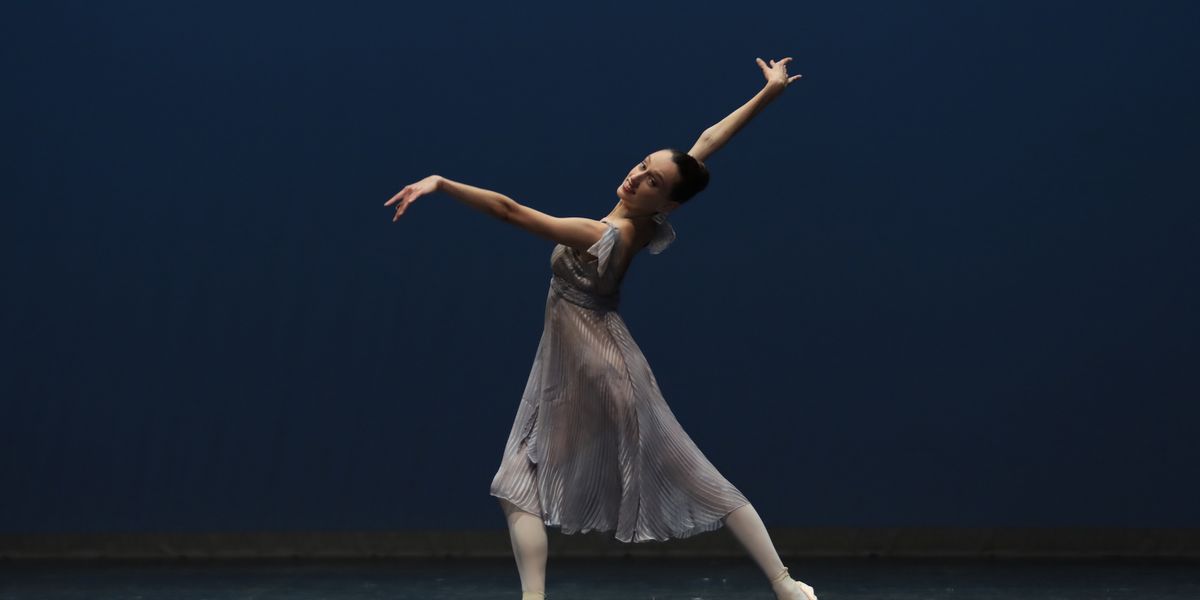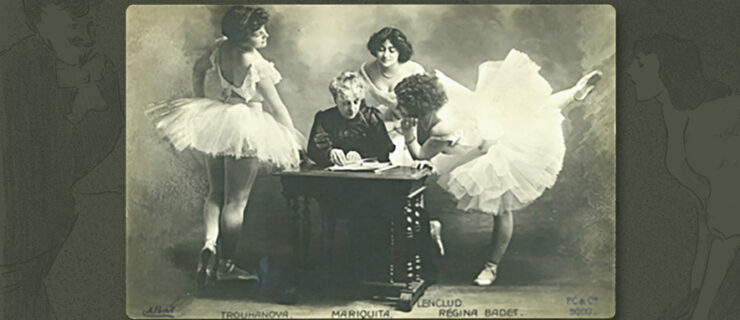Inside the Paris Opéra Ballet's Concours de Promotion, Dancers' One Annual Chance to Rise the Ranks
Dancing with the Paris Opéra Ballet normally entails performing to sold out crowds and admirers from around the world. But imagine dancers attempting to give their best performance in an opera house that’s eerily quiet and closed to the public. That’s what happened on November 6 and 8 when dancers competed in front of a jury, with only a handful of colleagues and journalists in attendance. Welcome to POB’s annual “concours de promotion,” or competitive promotional exam. In a company that employs 154 dancers, it is the only way to climb the ranks.
Outsiders are often baffled by this system because it is so different from how other companies promote their dancers. This year, Pointe was invited to take an inside look at this high-stakes event and spoke with two of the 14 dancers awarded promotions that go into effect in January 2020.
Background
The concours (pronounced con-core), as it’s known for short, was created in 1860 based on the advice of Paris Opéra Ballet School teachers, including Marie Taglioni (yes, that Taglioni of Romantic ballet fame). It is part of a much larger heritage of exams still active in France that are used for awarding job titles in a variety of professions.
Dancers perform in front of a jury composed of POB personnel, including artistic director Aurélie Dupont and company dancers. For the latter, certain conditions apply, such as a minimum of eight years dancing with the company, not competing themselves and not coaching any of the competitors. Two dance professionals outside POB are also required to form the jury. This year, San Francisco Ballet artistic director Helgi Tomasson and choreographer Angelin Preljocaj stepped in to adjudicate. The jury members rank the dancers based on two rounds of variations.
Preparing for the Concours
There is no obligation to participate in the concours, but many dancers do. Members of the corps de ballet, who may not have been seen in solo roles, are particularly eager to assert themselves.
Dancers must balance the fall season’s busy rehearsal and performance schedule with designated coaching sessions for the concours. Each rank of the company is assigned a different preparatory coach, including former POB dancers or members of the company’s teaching staff. For example, Bolshoi-trained Andrey Klemm, who regularly teaches class at the POB, helped prepare six men of the corps to perform a variation from Don Quixote.

Francesco Mura dancing his free variation, Solor’s Act II variation from Rudolf Nureyev’s La Bayadère. Mura has been promoted to premier danseur, starting in January 2020.
Svetlana Loboff, Courtesy Paris Opéra Ballet.
The Variations
Every rank is assigned an “imposed variation” selected by the artistic director. This year’s concours included choreography by Serge Lifar, August Bournonville and Rudolf Nureyev. All dancers are costumed accordingly and perform to live accompaniment.
Artists later perform a variation of their own choosing from the company’s large repertoire. Asked about her free variation, Silvia Saint-Martin, who was promoted to the coveted rank of première danseuse, notes, “I chose the first variation from Jerome Robbins’ Other Dances because I really wanted to show the freedom, imagination, simplicity and pleasure of dancing—and this variation allows for all of that.”
The decision was less obvious for Francesco Mura, also promoted to premier danseur, who admits that he changed his mind a dozen times before settling on Solor’s variation from Act II of La Bayadère. “It’s the character that appealed to me especially, and I wanted to work on the artistic side of things while maintaining an explosive level of technique.”
Understanding Job Titles
Once dancers are hired in the corps de ballet at POB, they hold a permanent contract. This means that outside a serious transgression, dancers are employed indefinitely until retirement at age 42. This is no guarantee of rising out of the corps or being cast regularly, but it does represent a level of job security rarely seen in the dance world. Many company members choose to spend their entire careers at POB, resulting in only a small number of job openings.
The company’s ranks include the quadrilles, who are entry level corps members, followed by coryphées. Although still considered part of the corps, sujets are often seen in soloist roles. Premiers danseurs are high-ranking soloists, and often perform principal roles. The highest position, étoile, cannot be awarded through the concours (it is by nomination only).
Within this hierarchy, a dancer’s advancement is not simply based on performance: there must be an opening at the next level up. For example, première danseuse Muriel Zusperreguy retired on November 23, which created an opening during this year’s concours. Eight female sujets competed for the one available post of première danseuse, awarded to Saint-Martin.
Pros and Cons
This can be frustrating for dancers who wait long intervals for advancement, not to mention those who perform poorly during the concours. Asked how not being promoted in past concours affected him, Mura replies “I was very sad…but it also allowed me to understand the real value of what I give to this art and it motivated me even more.” Saint-Martin echoes similar sentiments and underlines the importance of staying focused on personal goals.
On the upside, casting is not always limited to one’s rank. This fall, Hohyun Kang, a talented quadrille, performed alongside étoile Léonore Baulac in William Forsythe’s Blake Works I (incidentally, Kang was promoted to coryphée during the concours).
The event is also an excellent opportunity to see what members of the corps can really do when coached in advanced variations. Although not yet seen onstage this season, Nikolaus Tudorin, a quadrille from Australia, gave a stunning performance as the “Man in Brown” during his variation from Robbins’ Dances at a Gathering. Tudorin, who auditioned four times before being offered a permanent contract at POB, was promoted to coryphée. He is proof that while there may not be a meteoric path to the top at POB, methodical hard work and patience do pay off for many of the dancers who are willing to wait.
Congratulations to all 14 dancers who were promoted this concours, listed below.
Premièr Danseuse:
Silvia Saint-Martin
Premièr Danseur:
Francesco Mura, Pablo Legasa
Sujet:
Letizia Galloni, Caroline Osmont, Naîs Duboscq, Florent Mélac, Simon Le Borgne, Thomas Docquir
Coryphée:
Hohyun Kang, Célia Drouy, Clémence Gross, Antonio Conforti, Nikolaus Tudorin





